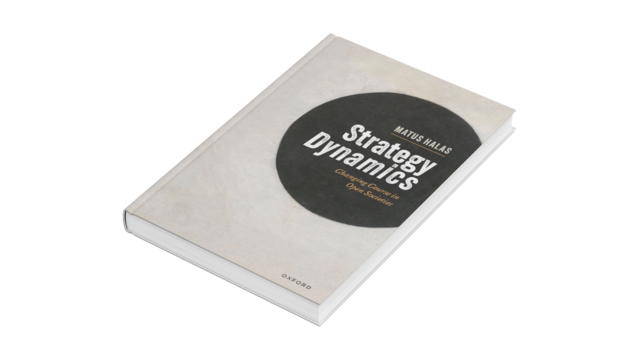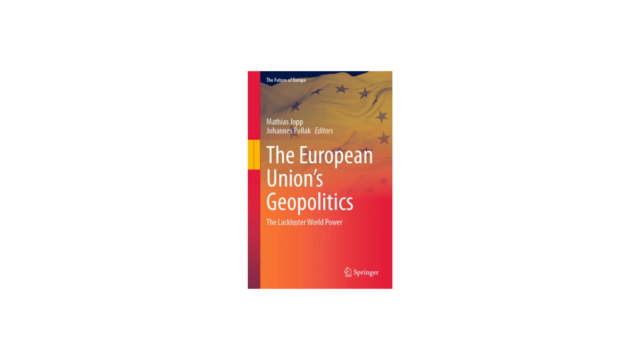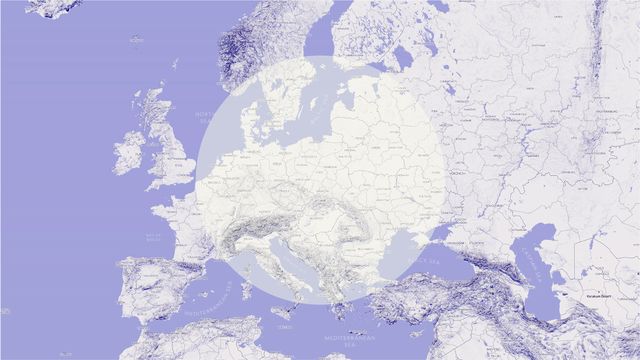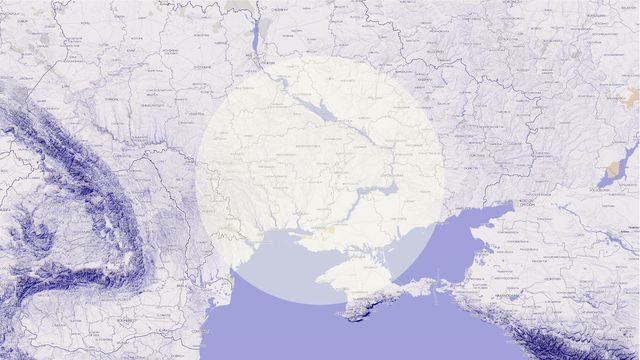Evaluating the Multilateral Framework of the Eastern Partnership

paper
Ever since the launch of the Eastern Partnership (EaP) in Prague in May 2009, its added value to the European Neighbourhood Policy has been hotly discussed. Some analysts claim that the EaP has been so successful that it has virtually eclipsed the ENP and that the EaP´s arrival heralds a final farewell to a unified approach to Eastern and Southern neighbour countries. Others take the opposite stance and argue that the EaP does not present a qualitatively new situation in the EU´s relations with its neighbourhood and that the ENP remains the main vehicle for the EU´s neighbourhood policy.
Summary
- While the Eastern Partnership (EaP) only deepens the bilateral relations of the EU with its Eastern neighbours, its main contribution is the new multilateral framework designed exclusively for the ENP ́s Eastern dimension.
- It is the EU who has been enthusiastic about the multilateral approach. The partner countries are more restrained, citing two factors for their scepticism:
- the fear that the EaP might gradually become an alternative arrangement to full membership and
- worry that multilateralism could decrease the so far prevalent country‐specific differentiation and thus slow down the quickest reformers
- The EaP ́s multilateral framework has several major strengths:
- the relatively simple and flexible “operational structure”,
- the focus on regulatory reforms,
- the introduction of the so‐called flagship initiatives, and
- the increased involvement of civil society.
- Among the potential problems, the most important are:
- the launch of the EaP amidst growing political and economic instability across Eastern Europe, and
- the financial resources which will not be sufficient in the long term given the ambitious work programme.
- Regarding the four thematic platforms, they cover most issues on the agenda. But while some topics discussed are truly multilateral (e.g. energy cooperation), others are predominantly bilateral and their inclusion in the multilateral framework is largely artificial (e.g. judiciary and public administration reforms).
- Some of the platforms with a strong agenda (such as energy security) are growing softer, hence limiting their relevance for both member and partner countries.
- The flagship initiatives, although generally sound and beneficial, are not of equal standing in terms of their importance (cf. the integrated border management and the support for small enterprises on the one hand, and the underfinanced reponsiveness to disasters on the other). In addition, one important originally proposed initiative – the Southern Corridor – entirely disappeared from the agenda.
- Two additional unresolved questions pertain respectively to the EaP ́s relation to the other regional initiatives (BSS) and the participation of third countries.
- The EaP has been doing well so far. Its long term success will be, however, dependent on four factors:
- the continuous high‐level political support for the project in both the EU and the partner countries,
-
whether there will be an unwavering focus on regulatory reforms that will prevent the EaP ́s multilateral
framework from turning into an irrelevant talking club,
-
achievement of some visible successes in areas like energy security, border management or institution
building (CIB),
- the increase in funding available for the EaP after 2013.
Introduction
Ever since the launch of the Eastern Partnership (EaP) in Prague in May 2009, its added value to the European Neighbourhood Policy has been hotly discussed. Some analysts claim that the EaP has been so successful that it has virtually eclipsed the ENP and that the EaP ́s arrival heralds a final farewell to a unified approach to Eastern and Southern neighbour countries. Others take the opposite stance and argue that the EaP does not present a qualitatively new situation in the EU ́s relations with its neighbourhood and that the ENP remains the main vehicle for EU ́s neighbourhood policy.
There is, however, one point on which both sides agree and that is the fact that the EaP finally introduced a multilateral element into the policy which had been so far limited to regional fora, which, however, do not include all six of the partner countries (the Northern Dimension and the Black Sea Synergy). The main aim of this paper is, therefore, to explore this newly introduced element and to assess its weaknesses and strengths. Since more than half a year has passed since the EaP ́s inauguration, the second aim is to compare the commitments and expectations reflected in the three main documents dealing with the EaP (the Commission ́s Communication on Eastern Partnership from December 2008, its working document on the EaP from the same month, the European Council Conclusions from March 2009, and the Joint Declaration of the Prague Eastern Partnership Summit) with the practical implementation thereof.
The paper will proceed in five steps: After this introduction, it will discuss the general context of the EaP ́s introduction. Then it will proceed to the assessment of its multilateral framework as it was proposed in the official documents on the EaP. In the next step, the paper will undertake a preliminary exploration of the implementation of this framework and it will conclude with some observations about the future evolution of the EaP.
General context
The EaP is a product of a double dissatisfaction: Among EU member states, there has always been a visible group of countries which have never put up with the official position of the European Commission that the ENP is in no way connected to the possibility of future enlargement. The creation of an umbrella policy that included both the Eastern and the Southern neighbours further weakened the link between the relations to the neighbours and accession since for the Southern neighbours, accession has been explicitly ruled out. At the same time, those member states keen on promoting closer ties with Eastern Europe have always skilfully insisted on the need to differentiate between “the neighbours of Europe” and “the European neighbours”. This insistence has met mixed results, but its greatest and newest achievement is undoubtedly the EaP since, while aiming only at the East, it transfers to the policy many instruments and mechanisms which have been used in the enlargement process. Thus the link between the neighbourhood policy and the policy of enlargement has been recovered.
The second dissatisfaction did not arise from among EU member states, but among the Eastern partners. Some of them, notably Ukraine, were quite vocal in their scathing critique of the ENP. Although the list of alleged weaknesses of the ENP as seen by the diplomacies of the partner countries was long, the most frequently raised point was – obviously – the missing membership perspective. While the EaP does not alter the fundamental approach of the EU, it certainly takes the edge off the critique since it puts a foot in the door to the EU, which is
famously “neither open, nor closed”, thus making it considerably more difficult for the EU to keep the Eastern partners outside the Union in the long term.
At the same time, the current situation is not at all conducive to a quick integration of the partner countries in the EU. First and foremost, virtually all partner countries suffer from serious domestic political problems. The euphoria surrounding the Rose and Orange Revolutions has long faded away and instead, disillusionment dominates the scene and the backsliding in democratic reforms is difficult to ignore. It is noteworthy that the problems with internal political stability have recently hit the three “shoo-ins” of the EU – Ukraine, Moldova, and Georgia. Secondly, most partner countries have seriously suffered from the global economic crises, with Ukraine tumbling on the verge of the abyss of state bankruptcy. All in all, the membership ambitions of the partner countries are currently at their lowest ever since the introduction of the ENP in 2003-2004.
Equally sobering is the fact that the two more specific goals frequently mentioned by diplomats from the partner countries – free trade and visa-free travel – seem today almost as far away as the membership itself. The shift from the original allusion to “visa free travel” to the weaker notion of “visa liberalisation” in the Prague Declaration is just one example of the fear of many EU members of uncontrolled migration from the East. In a similar vein, the feasibility studies on the so-called “deep free trade areas” in most cases came to the conclusion that the partner countries are not – and for a long time will not be – ready for full trade liberalisation with the EU.
It is a certain irony that the situation with which the EU and its Eastern neighbours are confronted is, on the one hand, characterized by the presence of a new and relatively ambitious project aiming at their deeper integration, and, on the other, marked by a growing number of serious problems which could tarnish the chances the EaP offers. It is therefore high time for the EU to give a clear sign to the partners that these problems will not diminish the EU ́s support for the policy and its will to substantially deepen the EU ́s relations with the partners.
The Eastern Partnership and multilateralism
No matter how innovative the EaP is, the basic coordinates of the ENP remain unaltered: The relations between the EU and the partner countries are still predominantly bilateral and the focus on action plans which specify the areas of regulatory integration also remains intact. Especially for Ukraine, the EaP does not bring anything substantially new; instead it simply transfers the experience from the EU-Ukrainian cooperation to the other partner countries. The only major difference introduced by the EaP is thus its multilateral dimension.
The multilateralisation brought about by the EaP is a logical and widely expected step. While the Southern dimension has for a long time been sufficiently institutionalised (and some would argue that its focus on institutions was excessive), the Eastern regional equivalent was missing from the ENP. The notion of differentiation that was so far anxiously interpreted by the European Commission as the differentiation between individual countries was thus, with the arrival of the EaP, finally broadened to include inter-regional differentiation as well. This is not to say that differentiation of this kind was previously absent from the policy – for example, the financial balance between the South and the East has always been closely followed. But the practical differentiation finally spilled over to political documents, signifying a formalisation of the differences between the South and the East.
At the same time, the partner countries have felt quite uneasy about the new multilateral element for several reasons. The most important of them has probably been the
fear that the forum might turn into a stable institution that would become an alternative arrangement to EU membership. Second, the region is plagued by strong inter-state rivalries. The would-be champions fear that the others could slow them down (which is the predominant view in Ukraine towards Moldova, in Moldova toward the Caucasian countries, and in Georgia towards Armenia and Azerbaijan). Unfortunately, these worries are often corroborated in practice since the Commission ́s preference of the bloc approach sometimes causes unnecessary delays. For instance, the dispute about the flights between Azerbaijan and northern Cyprus caused an interruption in EU negotiations with all three of the Caucasian countries. Needless to say, some states have nourished an even deeper mistrust of other partner countries because of the still unresolved frozen conflicts (Armenia and Azerbaijan). All in all, it seems that the multilateral element is assessed very positively by the EU, whereas the position of the partner countries is more restrained.
Even though the official documents concerning the EaP list many reasons for the creation of the multilateral framework of the EaP, ranging from information sharing to the facilitation of joint activities, the key element is succinctly summarised in the following quotation from the Commission ́s communication from 3 December 2008: “The proposed multilateral framework will provide the setting for the systematic organisation of dedicated sessions involving the relevant European Commission services and, where appropriate, Member State experts, devoted to the presentation and explanation of the EU legislation and standards as well as its comparison with national policy and legislation. In this way the EaP will initiate a structured approximation process.” The interpretation of the integration of the East European partner countries with the EU in terms of regulatory reforms, which has always been central to the ENP, has thus received another boost. It will be the efficiency (or a lack thereof) of the afore-mentioned “structured approximation process” that will decide about the overall success of the multilateral framework.
In the evaluation of the multilateral framework, we should distinguish the assessment of the proposals contained in the official documents and their practical implementation. As far as the first is concerned, the overall judgment is quite positive. Next to the focus on multilateral regulatory reforms, the multilateral framework as proposed has three additional strengths and one weakness. The first strength lies in its relatively simple “operational structure”, which provides for both high-level political support and a sufficient number of expert meetings ensuring its practical impact. The structure consists of four levels – a summit meeting every two years, annual meeting of foreign ministers, biannual meetings of “thematic platforms” and the even more frequent meetings of supporting working panels. More to that, the Commission indicated its preparedness to modify this structure if need be, thus showing a surprising level of flexibility. Another dose of flexibility and openness is added to the EaP by the possibility that every participating country can launch new initiatives within its framework.
The second strong point is the introduction of flagship initiatives that address some pressing issues (such as energy efficiency) that are essentially multilateral and, at the same time, of common concern for partner countries and EU member states alike. The flagship initiatives also carry the potential to rise over the technical work of the thematic platforms and become what their name implies - flagships that will gain attention in the national media and so increase the general visibility of the EaP.
The third strength is related to the ability of the EaP to involve not only the governments of the partner countries, but to also get their civil societies onboard. As demonstrated by the Civil Society Forum in Brussels in November 2009 (as well as the meeting at the margins of the summit in Prague in May), the civil societies in these countries are small and hard pressed in the search for funding, but their contribution to the success of the EaP cannot be overestimated. The NGOs often work as allies of those wishing for quicker
reforms, writing their own independent assessment reports, which is a development which should be undoubtedly promoted.
The weak spot of the multilateral dimension of the EaP is, perhaps not surprisingly, its insufficient funding. For the period of 2010-2013 600 million Euros are earmarked for the EaP. However, only 350 million Euros will be spent on the multilateral part. In addition, since the funds are not spread evenly over the four years, only 85 million Euros are available for 2010. Given the ambitious work programmes of the thematic platforms and the broad scope of the flagship initiatives, the financial support is clearly inadequate compared to the project ́s ambitions and the partners ́ expectations. The project is underfinanced not only in absolute terms, but also when compared to the means going to other EU neighbours. For example, as some analysts already noted, the pre-accession assistance to Turkey during a comparable time period will be five times bigger than the whole EaP budget.
The implementation of the EaP multilateral framework
The analysis of the EaP ́s implementation must necessarily start with the cautionary remark that it is still far too early to come up with a comprehensive assessment of its successes and failures. Especially in the multilateral framework, some projects have been launched only in December 2009, and others are expected to start during the first quarter of 2010. Yet a preliminary assessment of the framework ́s functioning is already due.
Regarding the four policy platforms (1. democracy, good governance, and stability; 2. economic integration and convergence with EU policies; 3. energy security; and 4. contacts between people), the first round of meetings took place in June 2009 with the first presentations of the EC ́s proposals alongside the EC-proposed priorities of actions. The second round of meetings was held in November 2009. Here, “core objectives” and “work programmes” were adopted.
The comparison of the platforms ́ working is complicated by three factors: First, some platforms discuss much more pressing and substantive issues than others. To give just one positive example, in the platform on energy security, discussions have already started on concrete proposals to increase energy security and predictability. Among the discussed issues, the Energy Community Treaty and the accession to it of Ukraine, Moldova and possibly also Georgia stands out. Other sensitive but vitally important issues include the establishment of an early warning mechanism and, even more importantly from a long term perspective, the possibility of information sharing concerning major energy investments, which is a topic that remains unresolved among EU member states as well. The same can be said about the most important platform – economic integration and convergence with EU policies.
The second problem is related to the fact that it is sometimes entirely unclear why some activities are categorised as multilateral. For instance, the work programme for 2009- 2011 of thematic platform 1 (good governance) dedicates a lot of attention to the reforms of judiciary and the public administration. These can no doubt be discussed multilaterally, but the process itself and the reforms as such have no multilateral dimension and must be implemented only domestically. True, the exchange of best practices and experts is useful but this seems to be the only added value in some parts of the platforms. Other platforms and other topics are much more multilateral in essence; this pertains to energy security, people-to- people contacts, environmental issues and many other topics. To put it bluntly, the former seem to be an artificial multilateralisation of principally domestic issues while the latter cover those areas that are multilateral in themselves. It remains to be seen whether the first (especially platform 1) will bring some added value beyond what has already been achieved bilaterally.
Third, compared to original expectations, some platforms have been weakened during recent months. For instance, the original focus of platform 3 on energy security has been gradually moving from issues related to hard security to a softer interpretation thereof. Environmental security is undoubtedly a welcome ingredient of the platform ́s focus, but the focus on environment should not be seen as a replacement of discussion about energy diversification but its complement.
Regarding the flagship initiatives, their introduction is certainly laudable. Yet some problems arise here as well. First of all, while some initiatives are well chosen and have a big potential in terms of accelerating the partners ́ growth and increasing the regional stability, the relevance of others is nigh negligible. Integrated border management and the support for small and medium-size enterprises are good illustrations of the first type, whereas prevention of and response to disasters is an embodiment of the second. Ironically, the EC further decreases the importance of the last initiative by assigning a puny 6 million Euros for it. One flagship initiative that was originally proposed – the Southern Corridor – has entirely disappeared. Even though on the practical level this may be related to the dissatisfaction of a partner country with the initiative, it nonetheless demonstrates the general shift from “hard” energy security we have discussed above.
Another problem is that even the potentially very useful initiatives are difficult to assess since so far all of them remain on a general level. The saying "The devil is in the detail" is particularly suitable for the analysis of these initiatives. For instance, it is noteworthy that the flagship initiative on integrated border management connects the project with the Union ́s previous efforts in Southern Caucasus and speaks of the replication of past successful initiatives, such as the EUBAM mission in Moldova. However, it is not clear at all at the current moment how the experience of EUBAM could be transferred to the hot spot of the Eastern neighbourhood, Georgia ́s secessionist provinces of Abkhazia and South Ossetia. Unlike in the Transnistrian conflict, the two regions are not surrounded by ENP partner countries but supported by Russia instead, and the EU itself is divided on how (and whether) to engage in the conflict solution. In addition, some projects, for instance, projects on environmental governance and small and mid-sized enterprises, will be launched only in 2010. Hence, their thorough assessment would be clearly premature.
Another difficult issue is the connections and overlaps both within and without the EaP ́s multilateral framework. Internally, there is a substantial overlap between some activities of the thematic platforms and the flagship initiatives (regarding environment, energy efficiency, etc.). Again, an evaluation will be possible only when the functioning of these projects settles down and the potential clashes either subside or come to the fore. What is more serious is the external overlap of the EaP with the Black Sea Synergy. The Commission has been careful to stress the “complementarity” of the EaP and the Synergy on every occasion, but the statements never explain the concrete mechanisms or division of labour between the two. For instance, speaking about environment, the Commission does not say more than “coordination with the Black Sea Synergy will be ensured”. The talk about coordination and complementarity, however, cannot hide the obvious fact that the two projects compete on many fronts – both in substance (covering many identical areas – good governance, energy, transport, etc.) and in terms of finances.
The comparison with the Black Sea Synergy brings to the fore the final difficult issue – the role of third countries in the multilateral framework. These countries could be regional powers (Russia, Turkey), “neighbours of the neighbours” such as Central Asian countries or extraregional donor countries (USA, Japan, Canada, etc.). The Commission ́s position is that third countries may be invited to participate in some projects on an ad hoc basis. But how often this will be the case remains to be seen. Also, since a consensus of 27+6 is required, the involvement of Russia, for instance, seems quite improbable for the time being. At the same
time, while generally supporting the involvement of Russia in some projects, EC officials are inclined toward a negative stance towards Russia ́s involvement in the thematic platforms. A different, but closely related, unknown variable pertains to the question whether Russia, Turkey and some other countries would be willing to take part in these projects. Given the negative remarks about the EaP by Kremlin ́s high ranking diplomats and the worries in Turkey that the country might end up in a regional initiative instead of in the EU, doubts about the viability of this abound.
Conclusion
The EaP is a project that finally formalises the ever more palpable regionalisation of the ENP. Although the EaP does not change the overwhelmingly bilateral nature of the policy, it adds a strong multilateral element. While the basic operational structure, including regular meetings on all levels, is sound and the flagship initiatives are well chosen, the project ́s future success is not guaranteed. The EaP is plagued by a number of problems, both EU- internal and external. 2009, the year of the EaP ́s inauguration, was a year of a deep economic crisis and growing political instability in the Eastern neighbourhood. This, together with the well-known reservations of the partner countries vis-a-vis the multilateralisation of the policy, makes predictions about the EaP ́s future evolution highly unreliable.
At the same time, there are reasons for optimism as well. Compared to other initiatives in the region (the Black Sea Synergy) as well as the multilateral forums in the Mediterranean, the EaP seems to be more efficient, more flexible and more ambitious at the same time. Interestingly, the partner countries that have never fully embraced the ENP (Ukraine) tend to see the EaP in a more positive light and the principle of joint ownership that never translated into reality with the ENP might finally come to fruition in the EaP. Some new elements, such as the Comprehensive Institution Building programmes, have also been well-received in the partner countries.
All in all, there are four basic criteria upon which we can judge the success of the EaP, and in particular the success of its multilateral framework. The first and most important is the question of continuity, the ongoing political support of the EaP by both the EU and the partner countries. Given the difficulties in those partner countries that are most enthusiastic about EU integration as well as the multiplicity of interests inside the EU, this will be no easy task. On the other hand, the EaP is certainly more attractive and offers more incentives than the ENP, thus motivating them strongly to pursue a path to reforms. Second, the multilateral framework should not shed its regulatory focus. Only if the thematic platforms remain connected to the domestic reform processes in individual partner countries will the framework remain relevant and useful without turning into a mere talking club. Third, the EaP needs some visible successes. For this, some of the flagship initiatives are most suitable, in particular those related to energy security and efficiency. Fourth, the financial support for the EaP will have to be increased in the future. Even though it is understandable that under current conditions the EU is in no mood to increase its external expenditures, the EaP ́s long-term ambitions cannot be satisfied without a substantial increase of financial resources for the period beyond 2013.










